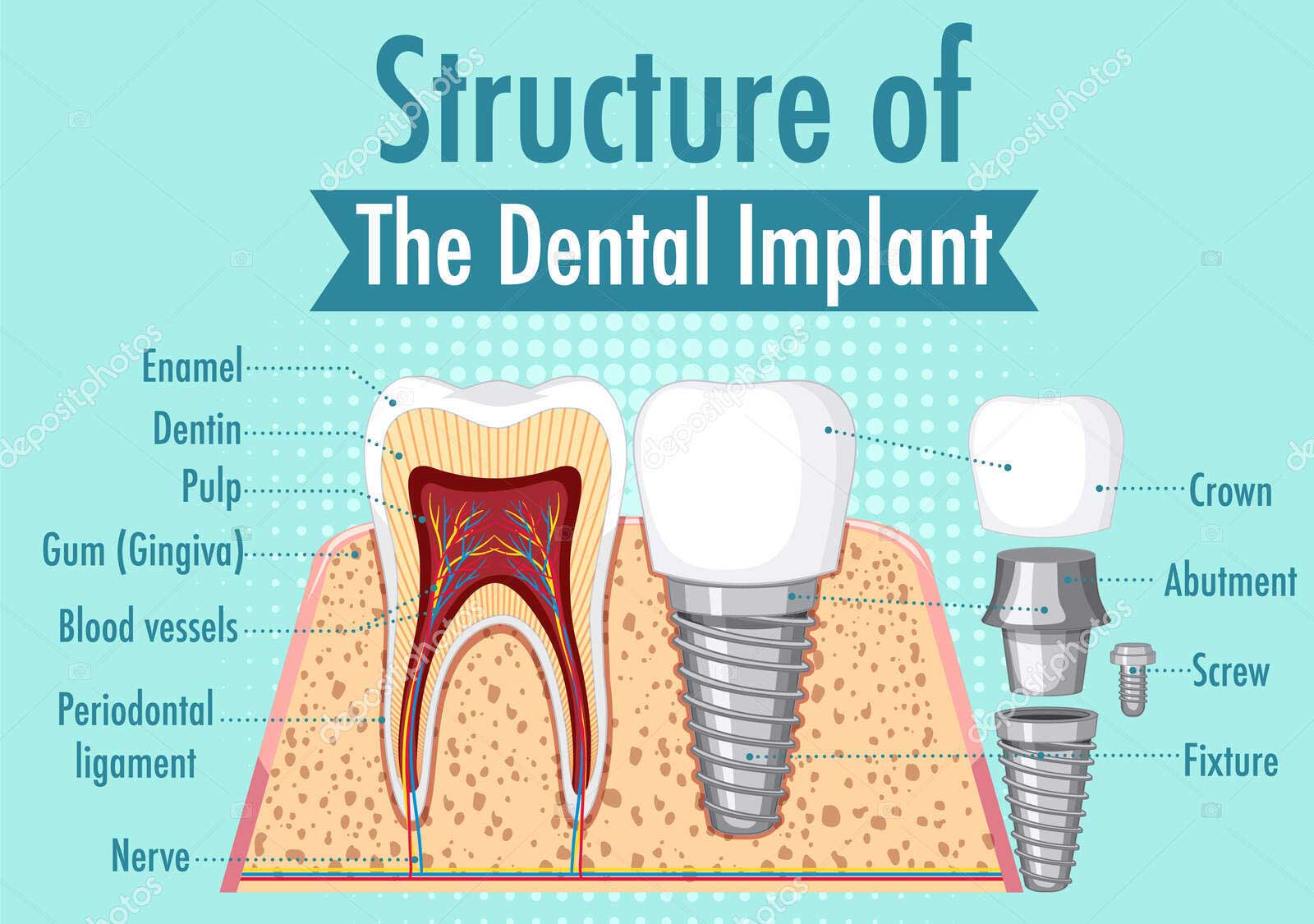Structure of a Dental Implant
Dental implants are artificial tooth roots used to replace missing teeth. Made typically from biocompatible titanium, these small posts are surgically placed into the jawbone, where they fuse with the bone through a process called osseointegration. Once healed, they provide a strong and stable foundation for replacement teeth such as crowns, bridges, or dentures. Dental implants look, feel, and function like natural teeth, making them a popular and long-lasting solution for restoring a confident smile, improving chewing ability, and preserving jawbone health.
A dental implant is composed of three main parts that work together to replicate the function and appearance of a natural tooth

The Crown
The top part is the crown, a custom-made prosthetic tooth designed to match the color, shape, and size of your natural teeth, completing the restoration for a functional and aesthetic result.
The Abutment
Attached to the implant is the abutment, a connector piece that extends above the gum line and supports the final restoration.
The Implant
The first component is the implant post, a small, screw-like structure made of biocompatible titanium that is surgically placed into the jawbone to serve as an artificial tooth root. Over time, the post fuses with the bone through a process called osseointegration, providing a stable foundation.
